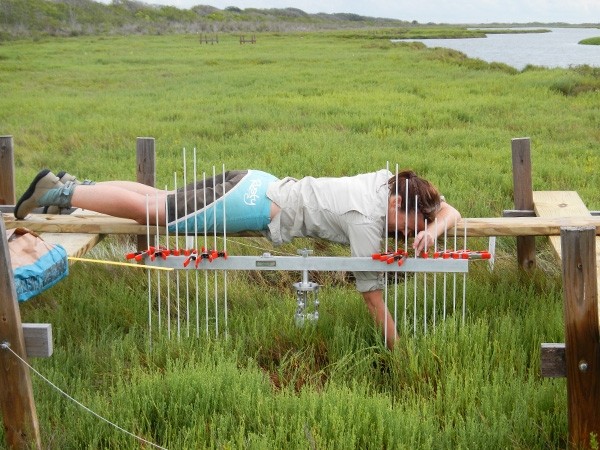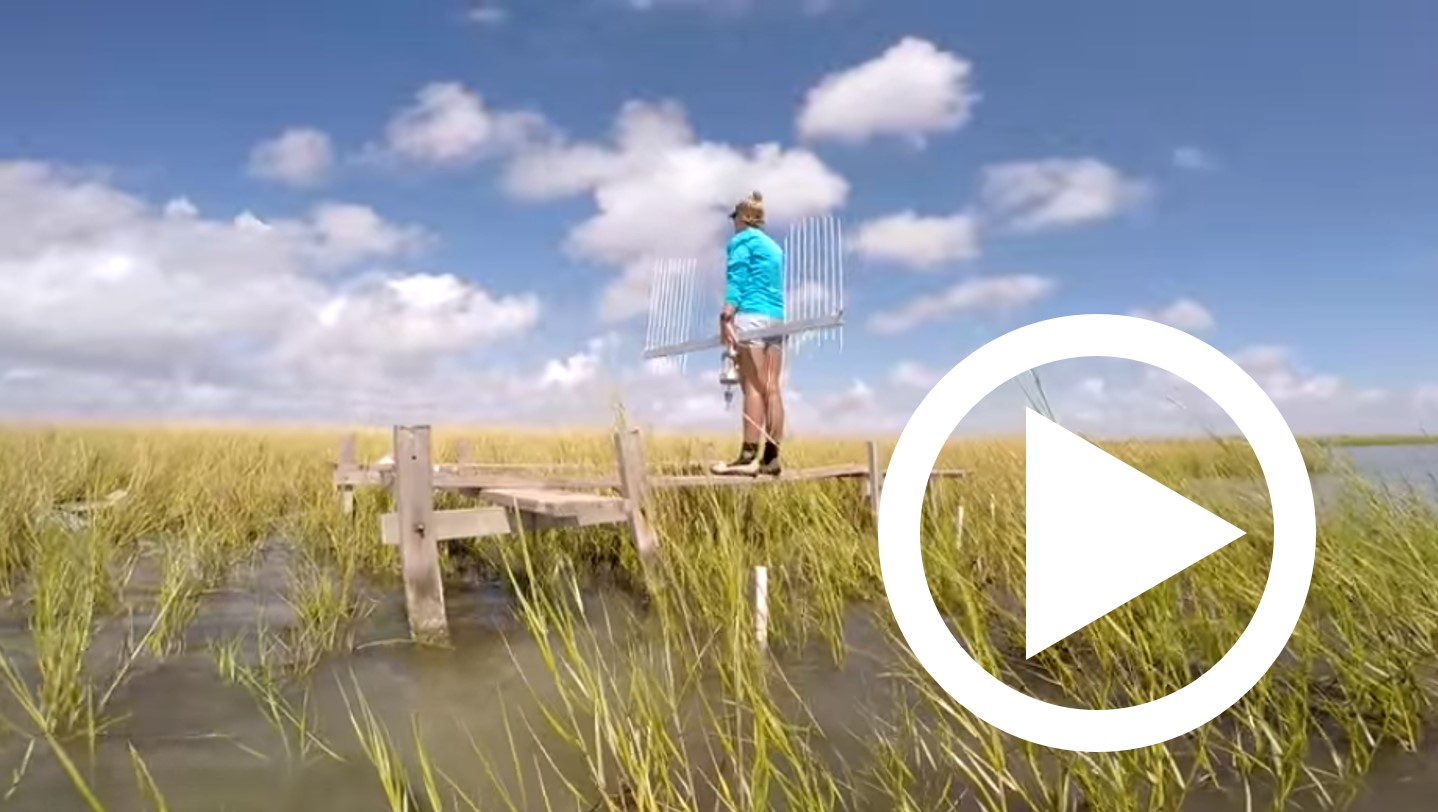Researchers with the Mission-Aransas Reserve at UTMSI are understanding how changes to sea level affect our marshes, mangroves and seagrass
WHY The primary focus of the National Estuarine Research Reserve System’s Sentinel Site Program is to understand changes in sea level and inundation and the associated responses of the marsh, mangrove, and seagrass. The Reserve a large expanses of marsh, seagrass, and mangrove habitats. These plant communities help fuel the high productivity of the local estuary. They are integral to the ecosystem and provide many important functions, including slowing erosion, moderating effects of floods, improving water quality, recharging and discharging groundwater, and supporting many of the fisheries that we rely on. They also serve as important places for commercial and recreational fishing, hunting, and bird watching.
HOW The goal of the sentinel site program is to monitor the change in elevation in marsh, mangroves and seagrass beds over a long-time scale. This change is measured by installing Surface Elevation Tables (SETs). The SETs can measure elevation change (both deposition/accretion and subsidence/erosion) on an extremely fine scale. These measurements, when combined with an assessment of the surrounding plants, allow us to determine how the elevation change may affect the plant communities.
IMPACT Determining the elevation change and how the plants respond to it will allow us to predict how sea level changes are affecting the local environment and predict how vulnerable our ecosystem is. This data could be used to assist the Reserve in developing sensitivity and vulnerability assessments and science-based strategies for adaptation. It will also be important for other resource managers along the Texas coast to understand what changes are happening and use our results to predict and adapt to changes they are experiencing.










